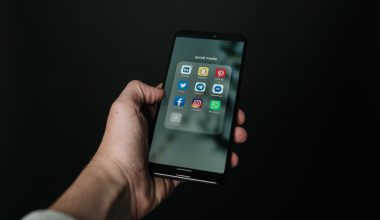Time-wasting habits creep in fast. One message spirals into a long thread, a “quick” meeting stretches way past its purpose, and before you know it, the day is half gone with little to show for it. Without clear boundaries and the right structure, these small distractions add up, making it harder to keep projects on track.
This article explores how to identify the biggest productivity killers and implement real strategies to fix them. Tools for hybrid and a remote worker app give you the inside scoop on where time is slipping away, making it easier to help your team build better work habits.

Why Does Productivity Keep Slipping Away?
Distractions don’t just steal a few minutes. They drain momentum and stretch the workday longer than it needs to be. Without clear expectations and a way to track where time goes, these habits become routine, making it harder for your team to stay productive.
Here’s what’s secretly draining productivity:
- Excessive Task Switching: Bouncing between tasks makes it impossible to focus, slows progress, and leaves work feeling half-done.
- Constant Notifications: Non-stop pings from emails and chats yank attention away, making it harder to get anything done.
- Unstructured Workdays: Without a solid plan, the workday drags on, and deep focus never really happens.
- Meetings Without Purpose: Too many meetings with no clear goal eat up hours that could be spent getting work done.
How to Help Your Team Stay Focused
If distractions keep pulling your hybrid or remote team off track, it’s time to shake things up. Small tweaks to how work gets done can make all the difference in turning wasted time into real progress.
Here’s how to make it happen:
Encourage Time Blocking
Time blocking puts your team back in control of their day instead of letting distractions run the show. Have them set specific chunks of time for deep work, where messages stay closed and focus is the only priority. Encourage batching similar tasks together so they are not constantly switching gears, which kills momentum and slows everything down.
Make it clear that emails and chats do not need instant replies all day long. Instead, set a few windows for checking messages, like mid-morning and afternoon, so work is not constantly interrupted. This way, everyone stays responsive without breaking their flow every five minutes.
Hybrid and remote work tools show exactly where time is going, whether employees are working from home or in the office. With those insights, you can spot gaps, adjust schedules, and make sure focus time is actually being used for real work.
Reduce Task Switching
Task switching drains energy and slows everything down. Instead of jumping between unrelated projects, encourage your team to batch similar tasks together. Have them group emails, reports, or planning sessions into dedicated blocks instead of scattering them throughout the day. This keeps their brain in the same mode longer, making work feel smoother and more efficient.
When assigning work, focus on longer, uninterrupted sessions. Avoid stacking multiple high-focus tasks back to back without breaks, as that leads to mental fatigue. Give your team real focus time by minimizing distractions and saving quick check-ins for later. A few smart task swaps can turn scattered, unproductive hours into solid, high-impact work.
Remote work tracking software like Insightful (ex Workpuls) helps identify when task switching is eating up time. With that data, you can adjust workloads and create schedules that support deeper, more focused work.
Rethink Meetings
If a meeting is necessary, keep it sharp. Define the goal, share an agenda in advance, and make sure everyone shows up prepared. Once it kicks off, stick to the point – no side tangents, no endless discussions, just a focused conversation that gets things moving.
Shorten meetings whenever possible. Many discussions that default to an hour could be wrapped up in 20 minutes with tighter planning. Encourage stand-up check-ins or weekly summaries instead of dragging the team into long calls that disrupt focus.
Software to monitor remote workers and those working part-time in the office shows exactly how much time is spent in meetings versus actual work. With that insight, you can cut unnecessary meetings and make sure the ones that remain are worth it.
Establish Clear Work Expectations
Set clear guidelines on response times so messages don’t feel like emergencies. Not everything needs an instant reply. Define which channels should be used for urgent requests and which can wait. This stops constant interruptions and keeps deep work from getting derailed.
Encourage prioritization by making sure the team knows what actually matters. Critical tasks should always come first, with smaller to-dos fitting in later. If priorities shift, communicate that early so no one waste time on the wrong work. A shared understanding of what’s important keeps everyone aligned and moving in the same direction.
A monitoring tool highlights how time is spent, helping identify when too much focus goes to low-value tasks. With that insight, workloads can be adjusted to match real priorities.
Reinforce Productivity With Real-Time Data
Even the best strategies fall flat without real data. A monitoring tool shows exactly where time is going, making it easier to spot distractions, fine-tune workflows, and keep productivity on track.
Here’s how a monitoring tool helps turn wasted time into productive work:
- Focus Time Tracker: Pinpoints when your team is locked in and what keeps pulling them off track.
- Workflow Fixer: Spots patterns that show where time is slipping away on low-value tasks.
- Accountability Booster: Gives your team a clear view of their own habits so they can course-correct.
- Smart Workload Balancer: Makes sure work is spread out wisely so no one is drowning while others have too little to do.
Conclusion
Setting up time blocks, cutting distractions, and fixing meetings that drag on all help your team work smarter. A monitoring tool backs this up with real-time insights, showing where the focus is slipping and where adjustments are needed.
When everyone works with intention, wasted hours turn into real progress, and productivity stops feeling like a struggle.





